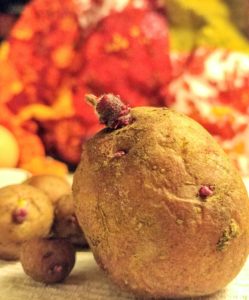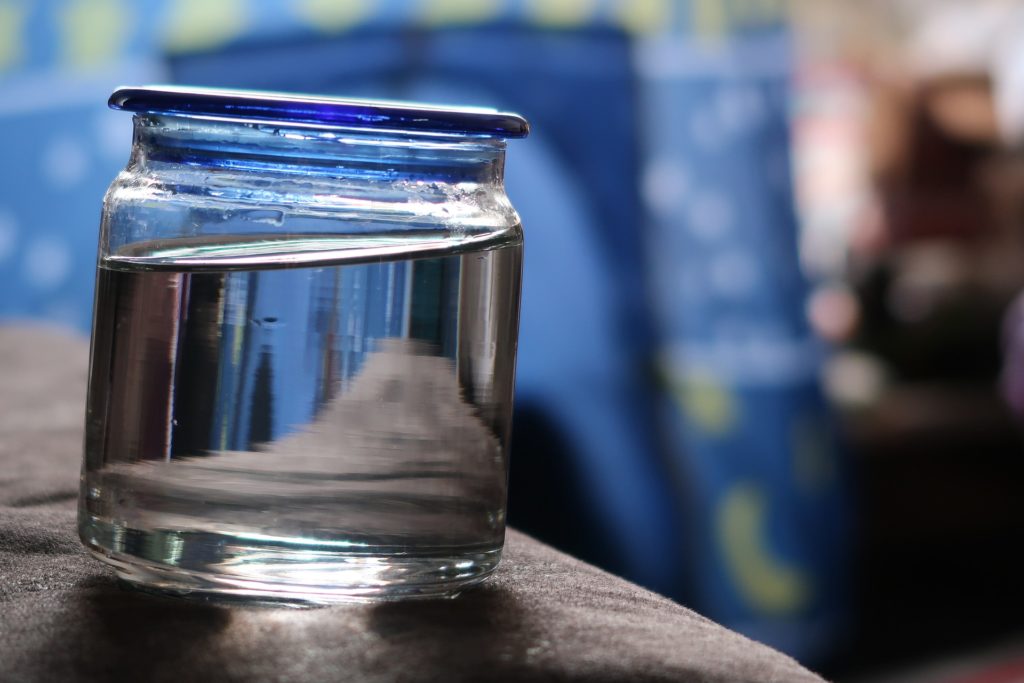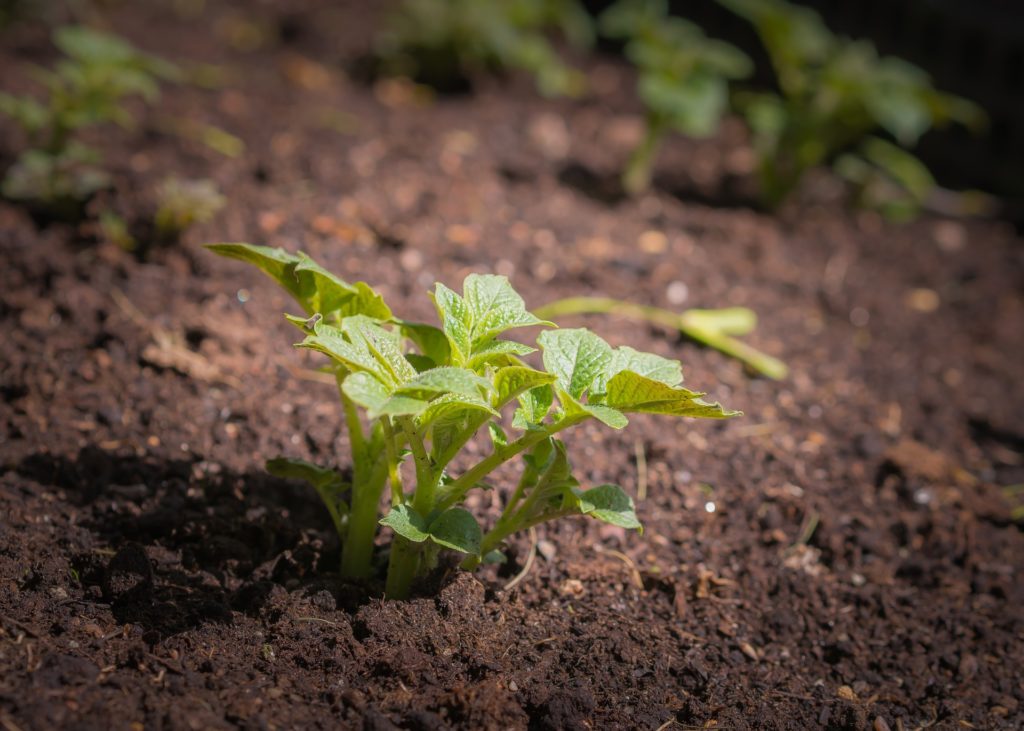So, you want to grow your very own, delicious, nutritious potato…
You have a jar, a bit of water, and a sprouting spud, with little white and green sprouts poking from every healthy eye.
Much to your surprise, these little guys seem to keep growing, regardless of the neglect they received; especially if they were in your pantry for months.
Before you just drop that spud into a jar and hope for the best, you must know that a potato vine won’t produce potatoes unless you make it happy.
An upset, neglected vine will still produce a beautiful small potato plant; but it may not produce big tubers, if it produces any at all.

How to Grow a Potato In a Jar
Before we continue, please make sure that the jar that you plan to use is clean and sterile. You do not want to introduce any diseases to the potato plant while it’s in its infancy!
Place 1 inch of water into the jar. Make sure that you use either clean well water, or bottled distilled water. City tap water contains chlorine and in many cases fluoride; I do not recommend using this water, but if you must, allow it to off-gas for 24 hours before placing the tuber in the water.

Once the jar with water is ready, place the seed potato into it, with as many sprouted eyes as possible pointing up. If the water covers more than 20% of the potato, drain some off. You only need enough water to keep the tuber hydrated and to encourage the development of tender, young roots.
Once the tiny plant is ready to grow, place the entire jar in the sunniest window in your home. This window will be on the southern side of the house, with no obstructions that block sunlight. If there are trees, buildings, vines, or vehicles blocking the sun’s rays, the potato plant vine may grow very slowly in the jar, which in turn may result in little to no tubers after the plant is transplanted.
If your potato jar is placed in a well lit location, you should begin to see some fairly rapid plant growth. Don’t expect the potato plant to produce any potatoes in the jar, unless the jar is over 2 gallons in size with a wide opening for harvesting. Otherwise, you will need to transplant the potato vine into a bigger container if you want potatoes; if you simply want to grow the plant and don’t want edible tubers, then you most definitely can keep the plant in the jar of water!
Transplanting Potato Plants from Jars to Pots or Gardens
Raised beds are one of the best ways to grow potatoes; but you could also grow them in containers like grow bags too. Or, check out how to manage a potato tower, if that sounds appealing to you! Either way you go, you’ll have to give the plant space if you want some potatoes.

If you only have a window or a porch to plant your jarred potato plant in, try using a grow bag or a 5 gallon bucket! Both of these will produce well. Place around 3″ of rich soil in the bottom of the bucket or bag, and place the plant and tuber (which has probably developed many roots) onto the soil. Cover the plant with 6″ more of soil; once the plant reaches an additional 8″ in height, add another 6″ of soil, leaving 2″ of the plant exposed. It will continue to grow happily, especially since it is no longer restricted to the jar.
As I mentioned previously, raised bed potato gardens are great too, and perfect for a small backyard! For one plant, build a frame that is 12″x12″x12″ of untreated wood. place the seed tuber onto the ground, and fill the frame halfway with soil; again, fill completely once the potato grows an additional 8″. These beds tend to produce the best potato harvests!
Keeping Potato Leaves Sunny, and Roots Shaded
One of the most important things to remember is this:
Potato plants need tons of full sunlight; the roots require the darkest conditions.
If you don’t let the leaves bathe in enough sunlight, the plant will be stunted in growth. As it continues to mature, it may produce little if any potatoes, and it probably won’t flower either.
For the roots and tubers, sunlight will cause them to produce chlorophyll. When a potato tuber produces chlorophyll, it turns green. This chemical process also triggers the production of solanine, which is known to be toxic to humans.
Keep the roots of the plant in a nice, dark location; under soil, in an opaque container. Transparent containers may allow the sunlight to reach the tubers.